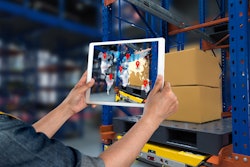
When the pandemic hit in 2020, industries around the world had to prioritize e-commerce and digital experiences. For years, many had simply been using workarounds or manual processes rather than addressing major holes in their B2B e-commerce strategies and developing a digital-first strategy instead.
Global disruption, however, meant that these industries — including manufacturing — had to truly commit to their digital-first strategies and devote the required resources to them. With challenges ranging from supply chain issues and technology gaps, manufacturing companies had no choice but to innovate, and fast.
I recently presented on this very topic at B2B Online; it’s an important conversation and one that is ever-evolving. Even as the world settles into a new normal, buyers’ expectations have been reset and continue to shift. Delivering seamless digital experiences is not easy, but it pays dividends in winning buyers’ business.
The merits of a digital-first strategy
In their personal lives, consumers can get dinner delivered or order a new outfit at the touch of a screen. They expect the same level of a high-touch digital experience in their manufacturing roles. They want their buyer’s journey as a B2B customer to match the ease and convenience of their B2C experiences.
Unfortunately, few B2B companies have invested the resources necessary to provide such a seamless digital experience for customers. And they’re paying the price: A massive 90% of B2B buyers would turn to a competitor if a current supplier’s digital channel couldn’t keep up with their needs. In all practicality, this means that it is more critical than ever for manufacturers to assess each step along the buyers’ journeys to ensure that customers have a clean, straightforward, enjoyable digital experience.
Customer Journey Optimization
What does it look like to provide customer journey optimization for B2B e-commerce customers? The following six steps are great places to start.
- Map out your future business objectives. A digital roadmap is an absolute must for providing a seamless digital experience. To build one that works, you must include actionable data, clear KPIs, and a demonstrated knowledge of your buyers’ priorities.
- Attract the right customers to your website. Phone calls don’t cut it in the digital age. In fact, 81% of B2B buyers start their purchasing processes online; only 9% start with a salesperson. That means your company needs to be easy to find online and that you need to provide the type of educational material your audience is looking for to help them make their purchasing decisions.
- Get your prospects engaged. Once you have prospective customers on your site, you need to have high-quality, educational content to keep them there. Make sure your site is easy to navigate and clearly organized and that it has optimized search functionality. The more quickly you help prospects reach their goals on the site, the more likely they’ll be to help you accomplish yours (like filling out a form to request more information).
- Help them select the right product. Your prospect has moved in the buyers’ journey from passive interest to active product research. Help them find the information they’re looking for with hands-on support and plenty of product information, samples, and strategic guidance. This will increase buyers’ confidence, speed up time-to-purchase, and ultimately make the purchasing process better for everyone.
- Make it easy to purchase online. Once your prospect has decided on the appropriate product, they still have to order it. Make their digital experience as seamless as possible to go from product selection to purchase. Whether this is a "quick checkout" option or seamless click-through to get to their cart, the goal is to get your buyer to their purchase as quickly as possible.
- Seek out opportunities to earn recurring revenue. Recurring revenue is the goal of any successful business. Instead of spending marketing dollars over and over to get new customers, you spend once and keep them happy by offering positive, easy experiences. With your digital-first strategy, remember to find inspiration from your own B2C experiences to simplify your B2B buyers’ journey (think consumer-inspired features, such as shipping status, order histories, and FAQs). For instance, if a buyer purchases a product that typically needs to be replaced after a year, send them an email just beforehand reminding them or even offering a discount on a replacement product.
In today’s landscape, it’s critical that manufacturers remember that B2B buyers are also B2C customers — and that they expect the same level of ease when purchasing in both spaces. That means you must reassess your operations and fully commit to a digital-first strategy.
To deliver seamless digital experiences, be intentional and strategic. Devote to attracting the right, most promising prospects, simplify and enhance their experiences in every way possible, and find relevant ways to engage them. When you make your B2B e-commerce buying experience seamless and intuitive, you increase the odds that customers become loyal customers and that you can attract and retain new buyers effectively — all in a way that lasts.









